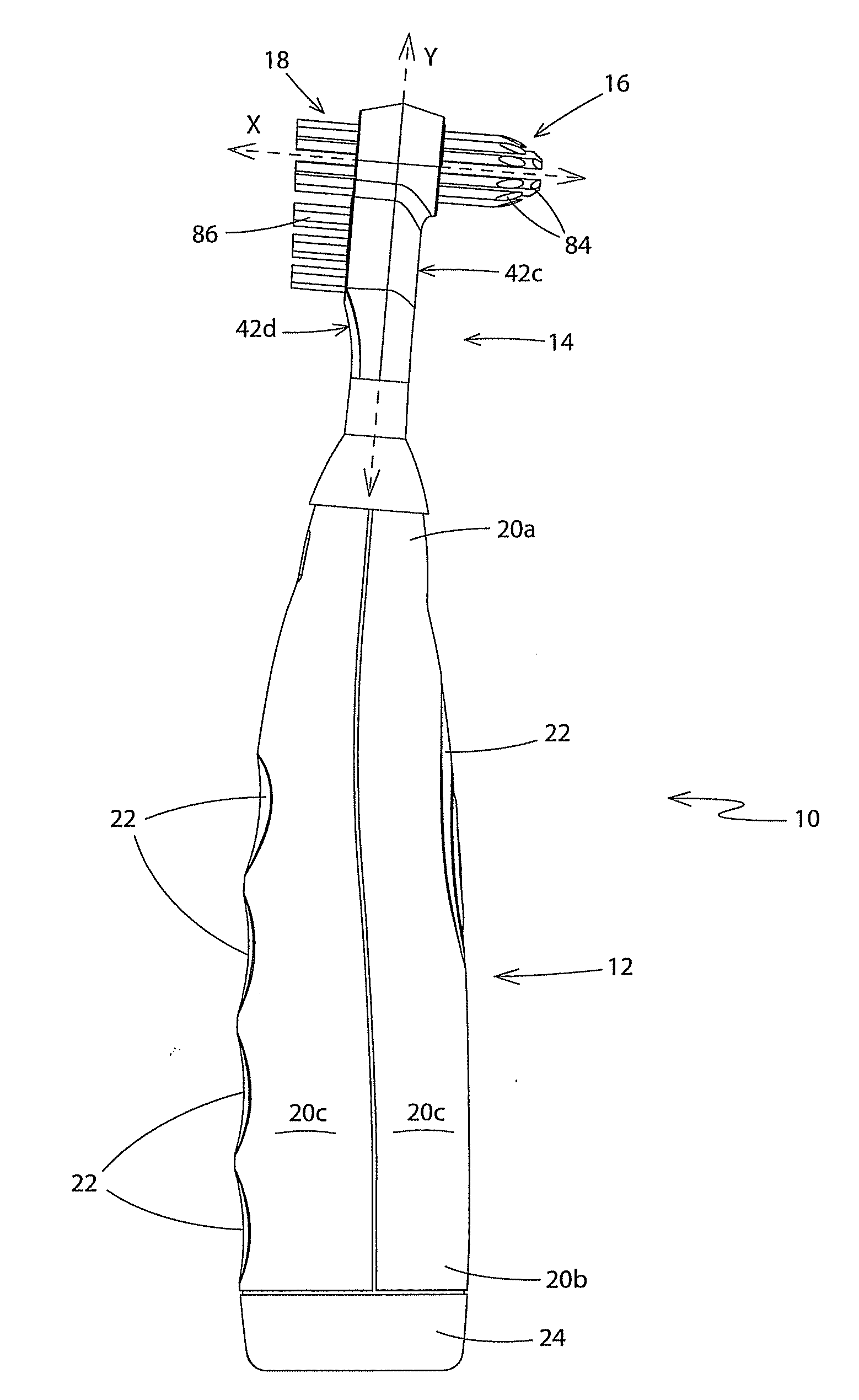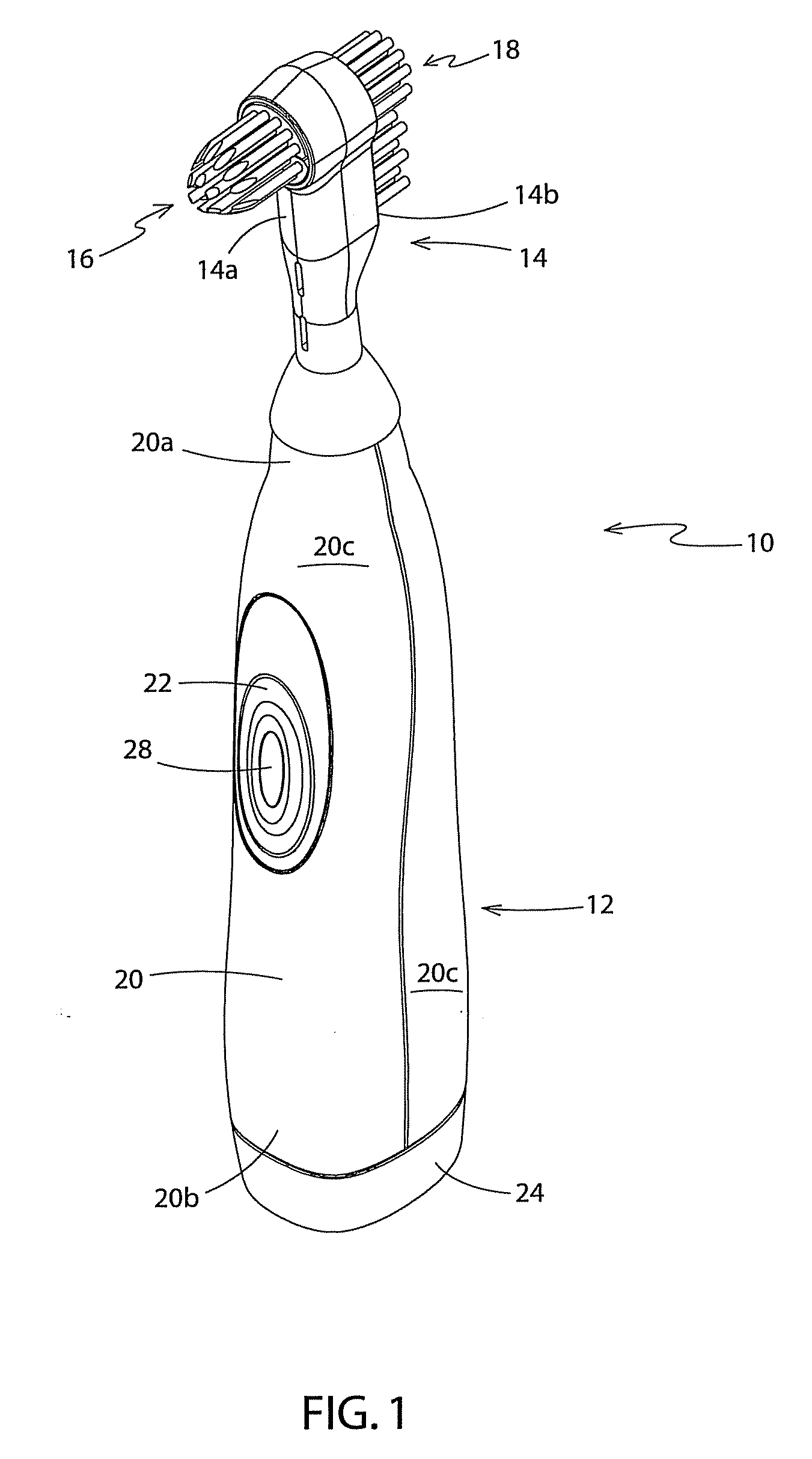Head for a powered denture brush and a denture brush incorporating the same
a denture brush and head technology, applied in the field of toothbrushes, can solve the problems of difficult use for the elderly or the infirm, difficulty in cleaning the teeth, and manual cleaning requires a significant amount of dexterity, and achieve the effects of easy cleaning of the bottom and sides, easy cleaning of the larger areas of teeth, and convenient us
- Summary
- Abstract
- Description
- Claims
- Application Information
AI Technical Summary
Benefits of technology
Problems solved by technology
Method used
Image
Examples
first embodiment
[0021]Referring to FIGS. 1-6 there is shown a powered denture brush in accordance with the present invention and generally indicated at 10. Brush 10 is designed for cleaning a denture 500 (FIGS. 9 & 10) that has both a teeth side 502 and a grooved side 504. Grooved side 504 is configured to receive a portion of the user's gum tissue therein and to be temporarily bonded thereto by way of a bonding agent. Brush 10 comprises a handle 12 and a head 14 that are detachably engageable with each other. As will be hereinafter described in greater detail, handle 12 includes a battery-operated drive mechanism that is operationally connected to components in head 14. Head 14 includes a first set of bristles 16 that extend outwardly away from a first side 14a of head 14 and a second set of bristles 18 that extend outwardly away from a second side 14b of head 14. The first set of bristles 16 is configured to clean gum-receiving groove 504 in a first side of denture 500 (FIG. 10). The second set o...
second embodiment
[0039]FIGS. 7a, 7b and 8 show the head of a powered denture brush in accordance with the present invention, with the head being generally referenced by the number 214. Head 214 is configured to be snap fitted to a powered handle such as handle 12 described previously herein. Head 214 is substantially identical to head 14 with the exception that there is a single first tuft block 270 that is substantially circular in cross sectional shape and that the camshaft 302 terminates in an angled slot 312 in first tuft block 270 instead of in a recess proximate the second end 242b of housing 242 as was the case with the previous embodiment. Consequently, when camshaft 302 is rotated by the drive shaft, first tuft block 270 is caused to rotate about the horizontal axis “X” (FIG. 8) instead of being linearly sliding in and out of the first and second apertures 262, 264. The rotation of first tuft block 270 about horizontal axis “X” is illustrated in FIGS. 7a and 7b. The first tuft block 270 the...
PUM
 Login to View More
Login to View More Abstract
Description
Claims
Application Information
 Login to View More
Login to View More - R&D
- Intellectual Property
- Life Sciences
- Materials
- Tech Scout
- Unparalleled Data Quality
- Higher Quality Content
- 60% Fewer Hallucinations
Browse by: Latest US Patents, China's latest patents, Technical Efficacy Thesaurus, Application Domain, Technology Topic, Popular Technical Reports.
© 2025 PatSnap. All rights reserved.Legal|Privacy policy|Modern Slavery Act Transparency Statement|Sitemap|About US| Contact US: help@patsnap.com



